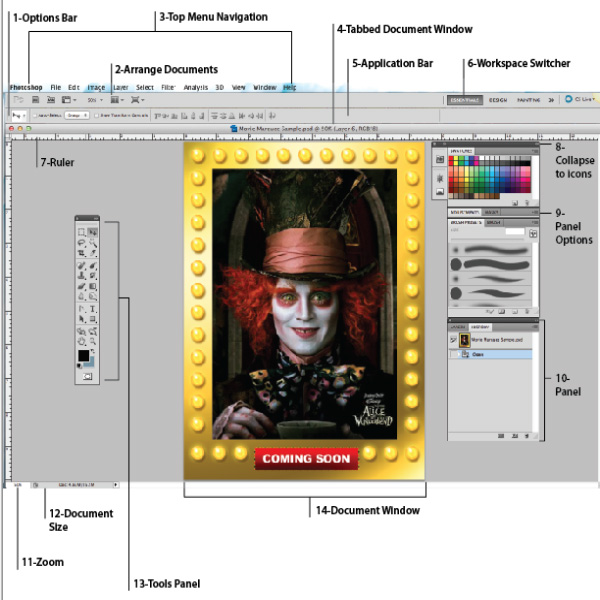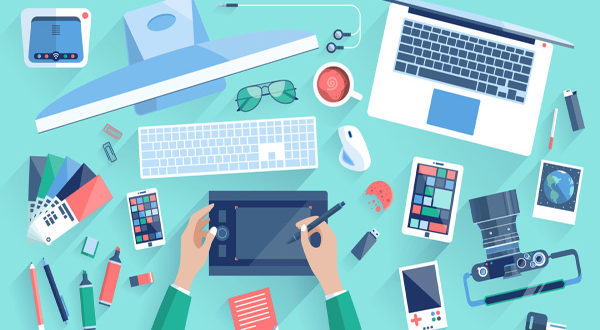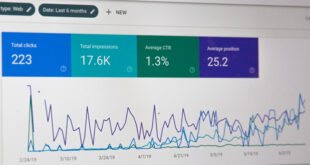A giddy feeling is invoked when you look at a certain exhibition for the first time. It heightens your senses, makes your brain spin around and gets your idea factory in motion. This inspirational force is there to drive new creations. A graphic design project has a similar start where motivation can stem from anything you lay your eyes upon. From the early stages of design formation to today’s technological advances, designers are the integral part of graphic design creative process.
The Start of Graphic Design
The earliest forms of design were mostly used in books as typography. Before this, drawings found by historians on cave walls were thought to represent a form of ancient graphics. In the early 1900s, posters became a form of expression and soon gained popularity. The 1940s saw the first actual graphic designs appear in propaganda posters of the era. A famous example of this is the “We Can Do It” poster featuring Rosie the Riveter. The slogans provided to these impressions were short, to the point, and were only present to set the tone of the actual graphic.
Throughout the 1900s
Technology was on the way to advancement as it became more and more available to the general public. Soon an entire industry, that today we know as graphic design, was starting to emerge. Old advertisements used interesting pictures and a catchy pitch to sell products and market businesses. In today’s ideology regarding modern design this would seem quite redundant. Any drawing could be used simply for attraction value and win any consumer over.
But Rosie the Riveter was an exception to this rule. It is now an iconic poster from World War II and it tells almost the opposite story. No factor gone into the poster is a waste. Even the text is merely complimentary as a slogan instead of being too overpowering. You can contrast it easily to the famous Shepard Fairey “Hope” poster made in 2008 for the Obama campaign.
The Introduction of Adobe Photoshop
In the 1950s there was a slow shift into the digital era that is currently in practice. Home computers were a new technological advancement that made the invention of the printing press old news. A new age was introduced, full of mass communication and access to esoteric art styles. This eventually led to the creation of new digital software for innovative methods of creating art. Adobe Photoshop was first released in 1990 and on its own it changed the face of graphic design. By using tools like photo manipulation, illustration and CGI, it was the change that led to the face of graphic design today.

Edging into the 2000s
The 2000s started a new era for graphic designers and their field. Tools became more powerful, and the designing process was transferred onto portable devices, like smartphones. Furthermore, innovative designers began to realize the significance of formatting their designs to all device types. Movement became a part of the graphic design process. With customers requesting custom animated video to take the focus more into movement, designers looked for more ways to make even stagnant logos look like they were moving.
How Companies Look At Graphic Design
The nature of branding has evolved to meet the changing world of design. MTV was one of the first TV channels to revolutionize logo usage. They constantly change theirs while maintaining what makes them so recognizable to their audience. Following this, a huge number of companies are now investing in graphic design. This astronomical development ensures that brands have more opportunities for exposure online. Memorable interaction with clients is needed through an image and that’s where graphic design comes in.
Another addition to this is that the online world has led to companies analysing real-time data. They can now find out which graphical elements have the best impact on their business. By investing in designers companies are getting a higher return on investments. A global conversation has started between brands, their customers, and the people with the tools to bridge the gap.
The State of Graphic Designers Today
The career of a graphic designer today is also marginally different than what it used to be. The evolution along with the development of the field means that companies no longer hire in-house designers; they would rather hire freelancers. An advantage of this for both the employer and the employee is saving on office space. Besides this, employers do not have to provide all the tools and devices needed for the creative process. Freelance graphic designers too can work from anywhere they’d like. Their office space is an Internet connection, a laptop, and a design software. It is clear that the field will only develop further with the advancements in technology all the while maintaining as a medium of artistic and creative expression.
Although graphic design has come quite a long way since its initial discovery in ancient caves, it is still considered as art and the practice of projecting ideas and experiences with both visual and textual content. Its mode of communication can include images, words, and graphic forms. Because of its extensive and rapid growth, the demand for graphic artist’s services has never been greater.
 CoalesceIdeas Web and graphic design ideas for inspiration
CoalesceIdeas Web and graphic design ideas for inspiration




